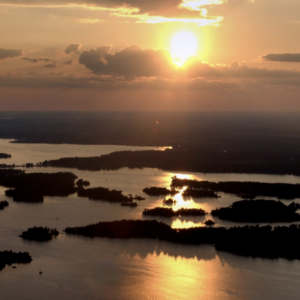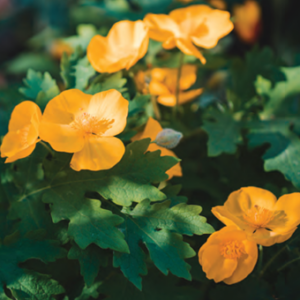What It Means—and Takes—to Defend Nature
Defending nature is a big job. Here’s how we do it, what it takes, and why we can’t do it alone.
Defending nature means protecting land
Canada’s government has committed to protect 25 percent of Canada’s land and waters by 2025 and 30 percent by 2030. By working together with our supporters and partners, we can hold them accountable to this promise to protect and conserve Canadian nature.
Protecting intact ecosystems like forests, grasslands, and wetlands has innumerable benefits to wildlife and humans. But a lot of these natural spaces are under threat from industry, urban development, and worsening climate impacts like fires and disease.
Some of these areas, like Canada’s Boreal forest, are globally significant. The Boreal stores twice as much carbon as the world’s recoverable oil reserves and holds more than 12 percent of the world’s land-based carbon stock—that’s the same as over 35 years of emissions from burning fossil fuels!

Defending nature means protecting species
The Boreal forest is also a habitat for billions of birds and animals, many of which are considered species at risk. Today, 50 percent of Canada’s wildlife species are in decline and more than 600 species are at risk of extinction.
We are seeing mass extinctions of species at an unprecedented rate. Over 200 species in the country are now protected under the Species at Risk Act, including the Blanding’s Turtle, Bobolink, Eastern Cougar, Woodland Caribou, and many more. Habitat loss is the primary cause of population declines in vulnerable species, which is why protecting land is such a key part of safeguarding endangered species.

Defending nature means honouring Indigenous stewardship
Eighty percent of biodiversity on earth is on Indigenous land, safeguarded by the generations of land and water stewards who have been sustainably living there for millennia. Defending nature and protecting species at risk can be a way of respecting and supporting traditional ways of life.
Self-established Indigenous Protected and Conserved Areas (IPCAs) can help defend nature for communities like the Moose Cree First Nation, where water, land, and cultural traditions are under threat from mining, logging, and development. The community sits in the lush boreal forest and the Hudson Bay Lowlands, which store over two times as much carbon as tropical forests like the Amazon.
Through IPCAs, Indigenous communities use Indigenous laws, governance and knowledge systems to protect and conserve ecosystems, with benefits for land, water, species, and the climate crisis. IPCAs create many cultural benefits for the community as well as for nature. They protect food sources and improve wellbeing by strengthening personal connections to the ancestral natural world while preserving Indigenous sovereignty.
Defending nature takes support from our members and partners
Support from partners like Scotiabank allows us to do this important work defending nature. We wouldn’t be able to take action for land, water, species, and climate change without help from our generous members and partners. We’d like to thank Scotiabank for its recent contribution to our work in defending nature. Together, we can encourage Canadians to protect our planet.




